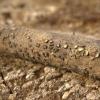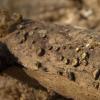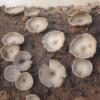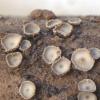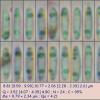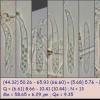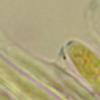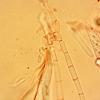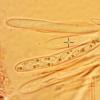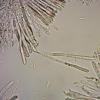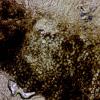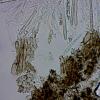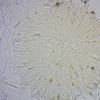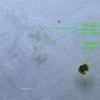
30-11-2025 12:53
 Edvin Johannesen
Edvin Johannesen
White short-stipitate apothecia found on thin twig

30-11-2025 10:47
 William Slosse
William Slosse
I recently found a collection of small Peziza sp.

27-11-2025 12:01
Thomas Læssøehttps://svampe.databasen.org/observations/10496727

27-11-2025 11:46
Thomas Læssøehttps://svampe.databasen.org/observations/10493918

17-09-2025 10:50
Heather MerryleesHi there!I am hoping for any advice on the identif

29-11-2025 08:40
 Andreas Millinger
Andreas Millinger
Hello,on a splintered part of a branch on the grou

28-11-2025 16:45
Nogueira HéctorNovember 23, 2025 Requejo de Sanabria (León) SPAI

25-11-2025 14:24
Thomas Læssøehttps://svampe.databasen.org/observations/10490522

27-11-2025 15:41
Thomas LæssøeSpores brownish, typically 4-celled; 26.8 x 2.4;

27-11-2025 11:31
Thomas LæssøeCollectors notes: Immersed ascomata, erumpent thro
Pyrenopeziza-like asco on Rubus
Sergey Markov,
25-06-2023 23:25
I found today a Pyrenopeziza-like ascomycete on dead stem of Rubus fruticosus. It grew from the underside of the stem facing to the ground. When they were moved to a drier environment, they curled up very quickly. When placed in a damp container, they also unfold quickly. I assumed P. dilutella, but after some research I began to strongly doubt this. First, ascospores are small. Secondly, the fungus has a very black and very hard outer excipulum, which is difficult for microscopy. Thirdly, I did not find hooks. Fourthly - most part of paraphyses contains strongly refractive content.
The first two photos were taken in nature 10 minutes after I found them. The second two photos (super macro) were already taken in a wet container.
sp (in water):
8.81 [9.59 ; 9.99] 10.77 × 2.06 [2.28 ; 2.39] 2.61 µm
Q = 3.52 [4.07 ; 4.35] 4.90 ; N = 24 ; C = 95%
Me = 9.79 × 2.34 µm ; Qe = 4.21
Q = 3.52 [4.07 ; 4.35] 4.90 ; N = 24 ; C = 95%
Me = 9.79 × 2.34 µm ; Qe = 4.21
asci (in water, living matherial):
(44.32) 50.26 - 65.93 (66.60) × (5.68) 5.76 - 6.70 (6.79) µm
Please help me with identification.
Michel Hairaud,
25-06-2023 23:37

Re : Pyrenopeziza-like asco on Rubus
Hi Sergey,
The homogenous vacualory bodies in the paraphyses you show would rather lead to the genus Mollisia instead of Pyrenopeziza.
You might even consider M. rosae ?
AmitiésMichel
The homogenous vacualory bodies in the paraphyses you show would rather lead to the genus Mollisia instead of Pyrenopeziza.
You might even consider M. rosae ?
AmitiésMichel
Sergey Markov,
26-06-2023 00:22
Re : Pyrenopeziza-like asco on Rubus
Thank You very much, Michel!
M.rosae fits almost good. I additionally tested now - my fungus clearly shows greenish exudation from black excipulum in KOH. But some doubts in the size of ascospores - spores shown in the Zotto's folder with M.rosae are shorter and somewhat wider than spores of my specimen. However, next to it, the folder "rosae-like long spores" contains info about a specimen that is more similar to my.
Sergey Markov,
26-06-2023 01:00
Hans-Otto Baral,
26-06-2023 08:18

Re : Pyrenopeziza-like asco on Rubus
Hi
The paraphyses are still intact, they cannot have experienced much KOH. What concentration did you apply?
Sergey Markov,
26-06-2023 09:26
Re : Pyrenopeziza-like asco on Rubus
Concentration was about 5-6% as I use for rehydration in some cases. I can test also with 20% (if paraphyses in the exsiccate also reacts).
Hans-Otto Baral,
26-06-2023 09:40

Re : Pyrenopeziza-like asco on Rubus
Even 1-2% would be sufficient. But the refractive contents in the paraphyses must disappear in KOH and react yellow. It seems the KOH did not reach them.
Sergey Markov,
26-06-2023 11:26
Re : Pyrenopeziza-like asco on Rubus
Hello Zotto!
I see slightly differently (compared to what I saw in the water in the same specimen - no photo available, but very similar to previous). Approximately 80-90% of the paraphyses lost the refractivity of its contents and became hyaline. In the remaining 10-20%, the content either remained unchanged or lost its refractivity and turned greenish-yellow. Moreover, in the same paraphyse, some part between the septa remained refractive, while the other part dissolved and stained. In this preparation there are no black parts of the excipulum, which are strongly stained, only the hymenophore and subhymenium.
But I don't know how to interpret this correctly. This (in conjunction with size and shape of ascospores) make me highly doubtful that it could be M.rosae as suggested. I think it's worth trying to sequence these samples if there are no new ideas
Hans-Otto Baral,
26-06-2023 12:09

Re : Pyrenopeziza-like asco on Rubus
The characters are clear for M. rosae, including spore contents and absence of croziers. You could try a macroscopical test by placing a small drop of KOH on an apothecium, perhaps put on a slide.
There exist several M. rosae ITS sequences, so this would clarify the issue.
Sergey Markov,
26-06-2023 13:00
Hans-Otto Baral,
26-06-2023 15:47

Re : Pyrenopeziza-like asco on Rubus
I see a distinct yellow reaction of the whole apo. You must know that this reaction is transient, you must look the first 10 seconds. A simple mount in KOH, checked some minutes later, looks negative because the colour diffuses. But the refractive contents (VBs) would never persist.
There is one collection by Enrique (ERD 5290) on Rubus, but none with a sequence.
Sergey Markov,
26-06-2023 16:48
Re : Pyrenopeziza-like asco on Rubus
Thank You Zotto!
This photo was taken in one minute after mount, and this greenish color was persistent up to 10 minutes, after that preparation was destroyed. A microphoto of paraphyses in KOH with partially preserved refractive contents was taken within 3-4 minutes after mount. But now I will know that I need to do it faster.
I will attempt to sequence this collection in the next run, approximately in the first half of autumn.
